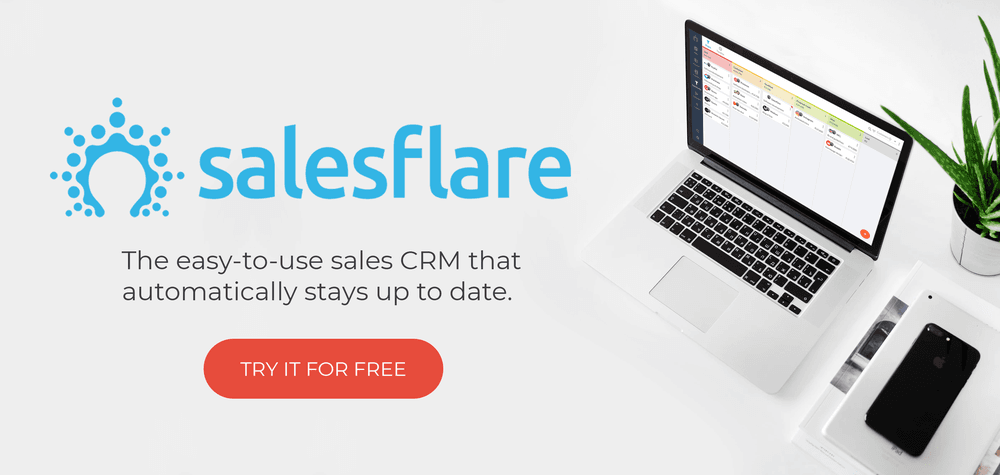Cómo crear la página web perfecta para una startup
Un blog invitado de Ryan Gould (Vicepresidente de Estrategia y Servicios de Marketing de Elevation Marketing)

If you want to create the perfect startup website, first know why a website is important. Too often startups jump into building a website without a clear vision of why they’re doing it and what they want to accomplish. Your website is the sun around which all your other strategies rotate. And the end goal of those strategies is conversions. So, the perfect startup website should be designed and optimized with conversions in mind.
1. Diseño
To accomplish its goal, your site must have good design, a good user experience with ease of use, consistency and good content. Did you know 38% of users will leave your website if they find it unattractive and 75% of users admit to making judgments about a company’s credibility based on their website’s design?
Hay que recordar algunas cosas:
1. Simplifica las cosas. Menos es más.
A Google study found websites with high visual complexity lead to more negative first impressions than websites of medium or low complexity – and users made those judgments in 17 milliseconds. You only have one to make a good first impression. Many agencies that offer webflow development services advise new website owners to always start small and simple because you can always do a redesign in the future.
2. Limítese a un par de tipos de letra con diferentes pesos y variantes..
Just because you have a whole bunch of fonts, doesn’t mean you should use them all. Each font conveys a feeling and you know what too many feelings can cause? Confusion. Re-read #1.

3. Ser coherente y moderado con el color
Cuando decida construir un sitio web personal, comience con los colores de su marca y utilícelos como color principal, elija 1 o 2 colores de acento y, a continuación, un color de fondo. Y ten en cuenta tu negocio. Como dice Neil Patel, utilice el color de la forma adecuada, en el momento adecuado, con el público adecuado y con el propósito adecuado.
4. Asegúrese de que el sitio está optimizado para móviles
This can’t be stressed enough. More than half of global internet traffic now comes from mobile devices. Google ranks mobile-friendly sites higher in mobile search results and last year started using the mobile versions of web pages for indexing and ranking.
2. SEO
One thing you have control over from the start is your on-page (or on-site) search engine optimization (SEO). That’s what helps determine your rank on search engine results pages (SERP) – the higher on the SERP you are, the better.

Hay algunas otras tácticas SEO que puedes utilizar, pero aquí tienes los factores SEO on-page que debes tener en cuenta desde ya:
1. Etiquetas del título
The title tag is what people see in search engines. It’s clickable and ideally it says what the page is about. Include one of your primary keywords in the title when possible (but don’t stuff keywords!) and keep it to 55-60 characters so it doesn’t get cut off in search results.
Why it’s important: Google looks at the title tag and compares it to the rest of the content to judge its relevance – and relevance is a factor for your rank in SERP.
2. Meta descripción
Esta es otra oportunidad para mostrar de qué trata una página. La meta descripción es lo que aparece debajo del título y la URL en las SERP. Debe tener unos 160 caracteres (si es más larga, aparecerá cortada en los resultados de búsqueda) y naturalmente contiene una o dos palabras clave.
Why it’s important: The meta description doesn’t factor in ranking, but it does improve click-through rate because it shows users a little more about the page content of your startup website. If people like what they see, they’ll click.
3. URL
Your URL helps identify the structure of your domain, but beyond that, it’s yet another place to use a keyword.
Why it’s important: The URL itself isn’t a major ranking factor, but when you include a keyword in a URL, it may help rank – it also helps identify what the page is about.
4. Texto alternativo
El texto Alt es para imágenes y está contenido dentro del código de la página. Su finalidad principal es describir las fotos a las personas con discapacidad visual que utilizan lectores de pantalla.
Why it’s important: Incluir una palabra clave principal en la descripción de la imagen puede ayudar a los rastreadores de los motores de búsqueda a indexar la imagen y contribuir al SEO en la página.
And don’t forget:
- Your company name and contact information (you’d be surprised how many companies don’t include thorough contact information).
- Asegúrese de que sus páginas se cargan rápidamente (puede perder 7% de sus conversiones por un retraso de 1 segundo en el tiempo de carga de la página).
3. Contenido
Where “more content” was the old mantra, now it’s more about topics and the content you create around those topics. Keywords on their own aren’t quite as important as they used to be, but keywords used in relevant content that matches searchers’ queries are.
Technically this is still under on-page SEO, but it’s the content that’s really the important thing. Google wants users to find answers – the best answers – quickly. Better, relevant content accomplishes that, so any startup website built around fresh, consistent content will be rewarded.
Hágase estas preguntas:
- ¿Mi contenido es rico? There’s no minimum number of words per page, but the more thorough the content, the better you’ll rank. A good rule of thumb is a minimum of 300 words on page. Longer content should be broken up with images, bullet points, Encabezados H1 y H2 y extraer citas.
- ¿Es mi contenido relevante para la consulta de búsqueda? If someone searching for “spring dresses” lands on a page for winter formals, they are going to bounce right off the page – and likely your site and your life.
- ¿Son mis contenidos fáciles de utilizar? Is it readable? If you’re not sure, try running it through a control de legibilidad). ¿Es correcta la ortografía y la gramática?
- ¿Estoy duplicando contenidos en varias páginas? Los motores de búsqueda reconocen el contenido duplicado y le penalizarán. Asegúrese de tener una variedad de contenido bien escrito y optimizado en su sitio.
Algunas cosas más a tener en cuenta para la página web de tu startup:
Abre un blog: Cada entrada del blog es una página más de SEO. Crear un blog, write authoritative posts with relevant (there’s that word again) content and optimize it for search. The optimal blog length in part depends on your industry, your website, and your audience, but in general, blogs that are 1,600-1,900 words rank better. That doesn’t mean use 100 words where 10 will do just to fill space. Concentrate on the quality of the content rather than the length.

Escriba para sus clientes: Don’t write stiff, formal content aimed at search engines. The search engines know better and so do your customers. Write naturally, as if you’re having a conversation because, really, you are.
Pida opiniones: Comentarios de los clientes es una parte a menudo olvidada de una estrategia global de marketing y de su marca. Al permitir comentarios sobre su sitio webDe este modo, podrá dar forma a todos los aspectos de su sitio web, desde la experiencia del usuario hasta sus ofertas y la satisfacción del cliente. Para que los visitantes de su sitio web tengan una experiencia aún mejor, también debe centrarse en protección del sitio web y un diseño UI/UX atractivo.
Incluya imágenes y vídeos: Contenidos web con imágenes y vídeo 94% mejor que el contenido sin. The fact is, visuals make more of an impression in people’s minds and they are remembered better than text. And when it comes to SEO, just remember that alt text!
4. En resumen
Un buen diseño, un contenido de calidad y el SEO son los tres factores más importantes para una página web perfecta que se posicione en las SERP, atraiga clientes y, en última instancia, genere ventas. Después de todo, la razón por la que tienes un negocio es porque tienes algo que vender.
Un poco sobre Ryan:
Desde instituciones heredadas de Fortune 100 hasta inventivas start-ups, Ryan aporta una amplia experiencia a Elevation Marketing con una amplia gama de clientes B2B. Diseña y gestiona con habilidad la entrega de programas de marketing integrados, y cree firmemente en la estrategia, no sólo en la táctica, que alinea eficazmente a los equipos de ventas y marketing dentro de las organizaciones.

Esperamos que te haya gustado este post. Si es así, ¡difúndelo!
👉 Puede seguir a @salesflare en Twitter, Facebook y LinkedIn.
if(window.strchfSettings === undefined) window.strchfSettings = {}; window.strchfSettings.stats = {url: “https://salesflare.storychief.io/startup-website?id=82341412&type=2”,title: “How to Create the Perfect Startup Website”,id: “b4bf56dd-9b24-4318-a472-b8522fe85e05”}; (function(d, s, id) { var js, sjs = d.getElementsByTagName(s)[0]; if (d.getElementById(id)) {window.strchf.update(); return;} js = d.createElement(s); js.id = id; js.src = “https://d37oebn0w9ir6a.cloudfront.net/scripts/v0/strchf.js”; js.async = true; sjs.parentNode.insertBefore(js, sjs); }(document, ‘script’, ‘storychief-jssdk’))- Arréglalo rápido - 3 de abril de 2024
- Guarda tus correos - 21 de diciembre de 2023
- Rastrear cualquier relación - 1 de diciembre de 2023
